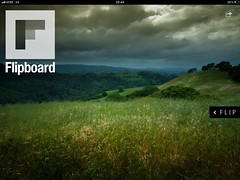| English: This icon, known as the "feed icon" or the "RSS icon", (Photo credit: Wikipedia) |
Google Reader is going away
Where did I leave that panic button? I know it's around here somewhere...I love to read. I love to read about current events and niche topics that hardly anyone really cares about. I use RSS feeds to deliver my content right to me. It is a librarian's dream to have information delivered to both my computer and my mobile device which makes information consumption and retrieval a smooth a ride as ever.
But alas, it was not meant to be. Google has announced that Reader (proper noun) is just not hacking it, so they've placed all the readers (common noun) on notice to find a new news (see what I did there?) delivery service by July 1.
Cue the Common Top 5 Post
This announcement has been a boon for techno-bloggers who suddenly have visions of writing THE post that helps people find their new RSS reader (while boosting their own subscription statistics). Guess what, look no further, because I have written that post a day late and a dollar short.I searched high and low and decided that these RSS reader services are the best ones for you, fair reader, to investigate. Be sure to take these out for a test drive to see how they fit in to your personal preferences.
The Magazine Style
Most of those other (read: lesser) "Top Reader Replacement" posts promote these guys as THE GO-TO options when transitioning out of Google Reader. They all have mobile platforms that make the reading experience as mobile as it is beautiful. Without further ado, The Magazine Style Readers: |
| Image via CrunchBase |
In addition, there are browser plugins and a handy transition guide that promises to make the July 1 transition a painless process.
 |
| Pulse (Photo credit: Johan Larsson) |
I actually do not mind Pulse all that much as an RSS reader replacement. It certainly has a beautiful interface which can be customized to a certain extent. I mainly miss a list format (Pulse seems to only allow the magazine look) and the social options provided by others. Clearly, you can't really go wrong this this application.
 |
| Flipboard (Photo credit: netzkobold) |
The only downside is the lack of a web application for desktop use. Perhaps things will change with a ported view given the trajectory of the modern OS, but that is a major downside of this option if you consider yourself a power user. (I fancy myself a power in everything, even if it turns out to be only a fantasy.)
The Ugly Style
Please tell me you haven't forgotten The Ugly One...Some people don't care about those fancy-schmaltzy user interfaces that come with these new-fangled interweb RSS readers, let me just have a basic view where I can jump from item to item with no problem. After all, Google Reader worked just fine under that principle. The few people who used it seem to like it. So there!
4) The Old Reader: This application claims to be just that, an old version of Google Reader! What better place to transition to than a downgraded version of what you love? All kidding aside, this little RSS Reader is a nice application for those who just want to read articles--images or video not so much. It is clean and straightforward.
As mentioned earlier, images were rendered strangely (everything was shoved to the right side, no wrapping whatsoever) and videos didn't even appear (which may be a clue for bloggers to remember to always include a link to videos in addition to embedding them). The Old Reader also seems to be gaining in popularity, because they were unable to process my Google Reader feeds due to overload. I tested the application on my personal blogs: GARB & WTHT. Overall, if you want a nice reader that doesn't bother with images and stuff, this is probably the one you'll be happiest with.
5) NewsBlur: Newsblur is laid out very much like Outlook, complete with a folder structure and reading panes. This RSS reader also owns a mobile app, so you can take it on the road. Personally, I feel like I am staring at my work inbox when I look at this UI, so I'm not too hot for it. But I understand how some people would love the simplicity and versatility of this layout (so much for my power user status).
The worst critique of NewsBlur--from what I've read-- is that they limit the number of subscriptions available to users. If this is true, then shame on them. Can't you see we're used to getting whatever we want in whatever portions we want?
6) Twitter Lists: I am not going to link to Twitter. You should know this one by now. And yes, people are actually suggesting that Twitter can be used to aggregate content because anyone who publishes stuff on the web should have a twitter feed by now and should be posting links to their articles straight to their feeds.
This option is decidedly more cumbersome, but still a great idea with some great benefits. For one thing, you can receive a text notification that your favorite writer has published a new post. Once you have opened the link in your browser, you can also share it with whatever application you'd like. It is mobile, a web application and can be customized using client software.
No, Twitter was not developed specifically as a feed reader. But it can serve admirably as a patch for the RSS service.














